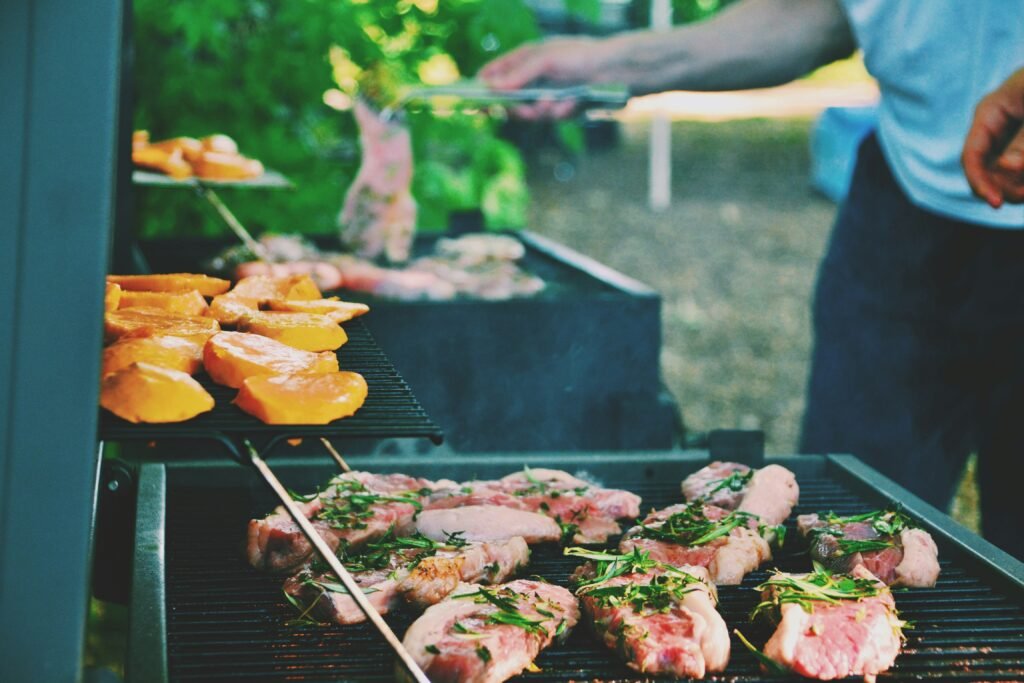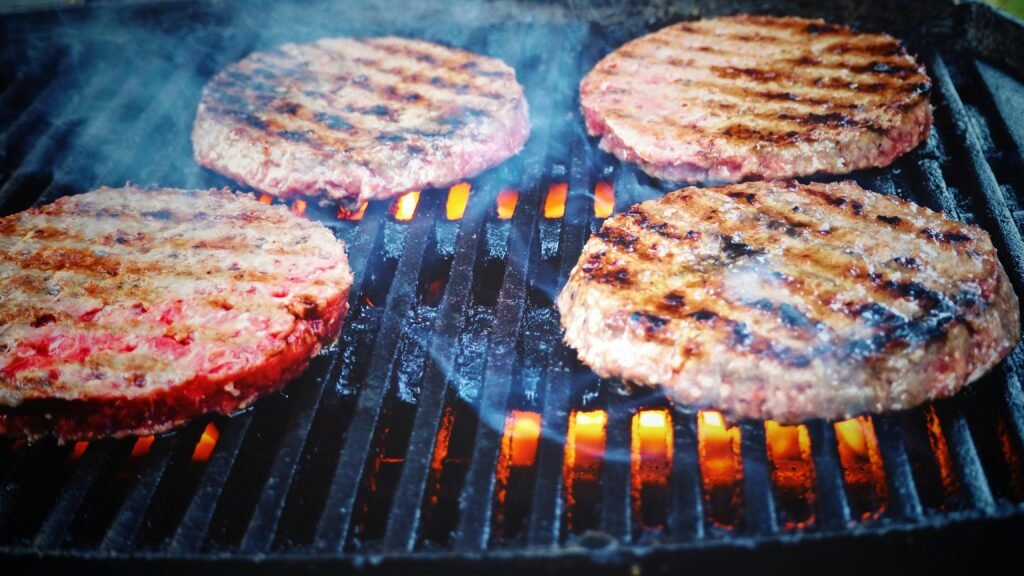Have you ever wondered what it takes to create the perfect smoked BBQ dish? We often find ourselves fascinated by the art and science of smoking food, as if it’s a mystical ritual passed down through secret societies of barbecue enthusiasts. But fear not, because we’re here to unravel that mystery and embark on a delicious adventure together.
The Allure of Smoked BBQ
Smoking food isn’t just about imparting a distinctive flavor, it’s about transforming a simple piece of meat into something extraordinary. The magical blend of smoke, time, and specific techniques results in a taste that’s hard to beat. We love the process because it allows us to slow down and savor something truly special, and we think you’ll agree it’s worth every smoky moment.
Why Smoke?
Smoking isn’t just about taste—though the rich, deep, and slightly charred flavor certainly doesn’t hurt. It’s also about texture. The low and slow cooking method breaks down tough connective tissues, resulting in tender meats that practically melt in your mouth. Beyond that, there’s the satisfying ritual of tending to a smoker, the camaraderie of sharing BBQ with friends, and the pure joy of a perfect bark, that crunchy exterior on smoked meats that we all love.
Choosing the Right Smoker
Before we dive into the recipe itself, let’s tackle the tools of the trade. Picking the right smoker is essential for achieving that classic BBQ flavor.
Types of Smokers
There are several types of smokers to consider:
-
Charcoal Smokers: Known for imparting a traditional smoky flavor, these require a bit of learning and patience to master.
-
Gas Smokers: Easier to control than charcoal, and they don’t require as much attention. However, they may not give as deep a smoke flavor.
-
Electric Smokers: These are akin to set-it-and-forget-it machines. Convenient but might lack that authentic BBQ depth.
-
Pellet Smokers: Offering a good balance between smoke flavor and convenience, these use wood pellets for heat and smoke.
Our Choice
We prefer using a charcoal smoker for that authentic experience. There’s something about maintaining the fire, getting our hands a little dirty, and really engaging with the process that feels so rewarding. If you’re not ready to take the plunge into charcoal, don’t stress. Each type of smoker can produce incredible results with a bit of practice.

This image is property of images.pexels.com.
Wood: The Unsung Hero
The type of wood you choose plays a crucial role in the flavor profile of your BBQ. Different woods impart different flavors, and pairing them with the right meats can elevate your dish.
Wood Types and Flavor Profiles
Here’s a simple guide to wood choices:
| Wood Type | Flavor Profile | Best For |
|---|---|---|
| Oak | Medium, all-purpose | Brisket, pork, sausages |
| Hickory | Strong, bacon-like | Ribs, pork shoulder |
| Mesquite | Intense, earthy | Beef, lamb (use sparingly) |
| Apple | Mild, fruity | Chicken, pork, fish |
| Cherry | Sweet, mild | Poultry, pork, beef |
| Maple | Subtle sweetness | Vegetables, cheese, poultry |
Our Recommendation
We often find ourselves reaching for hickory or oak when we’re prepping beef or pork. The balance between strong flavor and perfect smoke ring these woods deliver never fails to impress us.
The Meat of the Matter
Selecting the right cut of meat is crucial, whether it’s a bold brisket or a humble chicken. Let’s consider the stars of the BBQ world and how to choose them.
Popular Cuts for Smoking
-
Brisket: Known for its toughness requiring a longer smoke time, brisket becomes incredibly tender when done right.
-
Pork Shoulder (Boston Butt): Perfect for pulled pork, it has sufficient fat to render down during smoking, making it wonderfully juicy.
-
Ribs: Whether spare ribs or baby back ribs, the meat is perfect for absorbing smoke and rub flavors.
-
Chicken: A more delicate smoking experience, taking less time and readily absorbing flavors.
Our Go-To
While we love experimenting with various cuts, we regularly gravitate towards brisket. The rewarding tenderness and richness of flavor from a well-smoked brisket is something to write home about, and guess what? We’ll share our trusty recipe with you soon.

This image is property of images.pexels.com.
The Spice of Life
Now comes the fun part—seasoning! The right blend of spices complements the smoke and enhances the meat’s natural flavors.
Creating a BBQ Rub
A good BBQ rub is a balance of sugar, salt, and the right spices to add depth without overpowering. Here’s a basic all-purpose rub we often rely on:
| Ingredient | Amount |
|---|---|
| Brown Sugar | 1 cup |
| Paprika | 1/2 cup |
| Black Pepper | 2 tbsp |
| Salt | 1/4 cup |
| Garlic Powder | 2 tbsp |
| Onion Powder | 2 tbsp |
| Cayenne Pepper | 1 tsp |
Our Personal Touch
In our kitchen, we sometimes like to go off-script, adding a pinch of cinnamon for warmth or a hint of chili powder for extra punch. The fun part is experimenting and making it your own.
The Ritual: Smoking The Perfect Brisket
You’ve got your smoker, wood, meat, and rub, so what’s next? It’s time to put it all together for the ultimate smoked brisket. This takes time, but remember, patience is a virtue we admire greatly.
Prepping the Meat
Start by trimming the brisket—removing excess fat but leaving enough to keep it moist during smoking. It’s like gardening, where precision and care are key.
Then, apply the rub generously, patting it into every groove and crevice as though giving it a massage. Wrap it in plastic wrap and let it sit for at least 2 hours, or overnight if you’ve got the time.
Setting Up the Smoker
Prepare your smoker by preheating it to around 225°F (107°C). This is the sweet spot where magic happens slowly. Add your chosen wood chunks, letting them smolder gently to create that luxurious smoke.
The Waiting Game
Place the brisket in the smoker, with the fat side up to let the juices naturally baste the meat. Keep the lid closed as much as possible. We find mingling with the smoke occasionally is therapeutic, so exercise restraint.
Expect about 1 to 1.5 hours of smoking per pound of meat. This is where patience truly tested. Check the internal temperature with a meat thermometer; you’re aiming for about 195°F (91°C).
The Crutches: Resting and Slicing
Once smoked to perfection, remove the brisket and let it rest for at least 30 minutes. This resting period allows the juices to redistribute. We sometimes cover it with foil to keep it cozy, like tucking in a child for the night.
Slice the brisket against the grain. You’ll marvel at the juiciness and revel in the smoky aroma, all while feeling like a BBQ master.

This image is property of images.pexels.com.
Savoring the Moment
Serving up your smoked brisket can be a spectacle. Pair it with sides like coleslaw, cornbread, or a classic BBQ sauce. For us, sharing this with friends and family is like throwing a culinary party.
Reflecting on the Process
As we savor each bite, we often find ourselves reflecting on the journey: from selecting the wood to controlling the smoker and finally tasting that perfectly smoked meat. It’s an adventure worth every minute spent.
Future Adventures
Having mastered the brisket, or even if you’re learning alongside us, remember there’s always more BBQ to explore—smoked turkey, duck, or even dessert. The possibilities are endless.
Embracing the Smoke
Smoking BBQ is much more than just a cooking method; it’s an art form, a conversation started over clouds of flavorful smoke, a celebration of flavors that dance in harmony. As we’ve navigated through each step from wood choice to savoring the final bites, we hope you’re inspired to embrace smoking as a beloved culinary tradition. It’s a journey defined by experimentation and triumphs that brings us closer with every sizzling, mouthwatering endeavor. So, what’s stopping us? Let’s fire up those smokers and create something amazing together!



